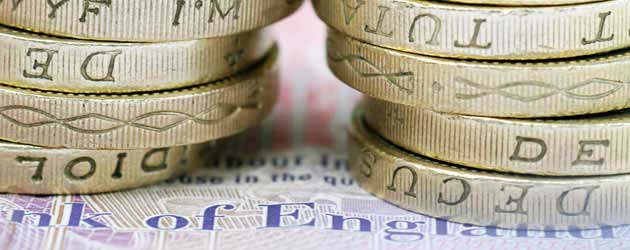 The commodity-correlated ‘Aussie’ (AUD) Dollar has been subject to intense volatility over the past month due to rapidly falling prices. As yet more commodities dive to record-low values the difficulties mount…but at least now the Reserve Bank of Australia can’t blame economic stagnation on ‘Aussie’ overvaluation. With nothing in terms of economic data to curtail the trend; the Pound is steadily gaining from improved sentiment following the Unionists victory in the Scottish referendum.
The commodity-correlated ‘Aussie’ (AUD) Dollar has been subject to intense volatility over the past month due to rapidly falling prices. As yet more commodities dive to record-low values the difficulties mount…but at least now the Reserve Bank of Australia can’t blame economic stagnation on ‘Aussie’ overvaluation. With nothing in terms of economic data to curtail the trend; the Pound is steadily gaining from improved sentiment following the Unionists victory in the Scottish referendum.
The Pound Sterling to Australian Dollar exchange rate is currently trending in the region of 1.8350.
Friday morning saw the Pound surge against all sixteen of its major trading peers following the result of the Scottish referendum, which saw those in favour of a united Britain emerge victorious. The build up to the result was fraught with indecision, confusion and anxiety. Poll after poll revealed different results, with the lead seemingly changing hands from day to day. All this confusion saw traders opting to employ risk aversion tactics which, in turn, saw Sterling plummet against all of its major competitors.
In addition to improved sentiment towards Sterling aiding an uptrend; recent retail sales data showed that Augusts’ results were much improved on July’s stagnation. Although unable to meet with the market consensuses; both Retail Sales and Retail Sales including Auto improved upon the previous figures. The improved consumption has been linked to a rush to purchase high-power cleaning equipment after a recent European Union law banning vacuum cleaners above 1,600 watts was introduced.
Australia’s current economic struggles can be attributed to several factors. Reserve Bank of Australia Governor Glenn Stevens blamed the slow economic growth on an overvalued ‘Aussie’ which, in turn, has made it difficult for foreign businesses to invest in Australian businesses. After Stevens talked down the ‘Aussie’ Dollar the South Pacific currency dropped in value.
Perhaps the most significant contributor to the ‘Aussie’ downtrend was a huge cut to the prices of raw materials. As the world’s leading iron ore exporter, Australia was hit hard by data out of China and the US which showed that supply far outweighed demand.
The Pound Sterling to Australian Dollar exchange rate has hit a low today of 1.8238.
With a complete absence of UK economic data on Monday the movement of the Pound Sterling will be dictated by foreign currency movement. The Eurozone Consumer Confidence report may have some bearing on Sterling because improved consumption leads to increased trade between Britain and the Eurozone.
Australia has been hit hard on Monday by yet more price reduction in the global commodities market. Corn and soybeans extended a decline to the lowest level since 2010 on expectations that the US harvest will reach record levels. Futures fell as ‘the market continued to focus on reports of bumper crops coming out of early harvested areas with the prospect of record production looming,’ AWB (Australia) Pty, a unit of Cargill Australia Ltd., wrote in a report today.
Global gold prices have also dropped significantly. Bullion fell to an eight-month low on the outlook for higher US borrowing costs. Silver sank to a four-year low and platinum also fell to a yearly low.
The Pound Sterling to Australian Dollar exchange rate has reached a high today of 1.8360.
UPDATE
The Pound Sterling to Australian Dollar exchange rate is currently trending in the region of 1.8361.
Those invested in the Australian Dollar will be very pleased to see a positive manufacturing print from China. The HSBC Manufacturing PMI was expected to drop from 50.2 to 50.0 (The point that divides growth from contraction) but the actual data showed an unexpected jump to 50.5. The print has eased pressures on commodity prices. Oil, soybeans, gold and copper have all rebounded after the Chinese data.
The Pound continues to struggle since traders opted to lock in their profits after the surge from the Unionist victory in the Scottish independence referendum.

